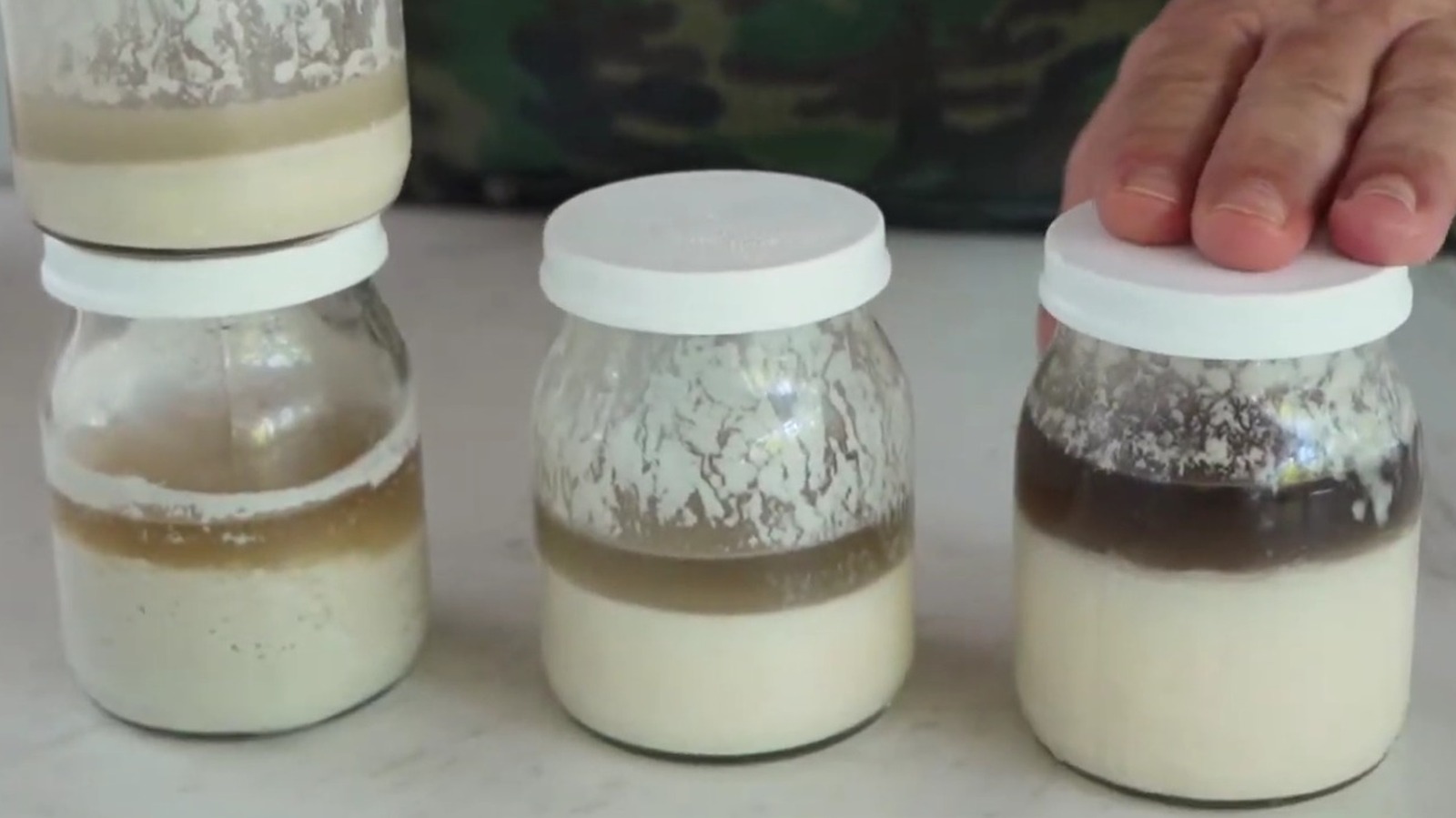For beginners, making sourdough can be an intimidating process. Aside from baking the actual loaf, you first have to and subsequently keep it in good condition. Doing this requires you to feed it regularly.
If you don't, you might find a liquid forming on top of your starter. This is known as "hooch," and don't worry, it's not actually a bad thing. Essentially, hooch is just a mixture of alcohol and water, created by the yeast in the starter.

It signifies that the starter is hungry. The yeast creates this liquid as a by-product of fermentation. When left for a long time, the once active and bubbly starter collapses and gravity causes the solids in the starter to sink beneath the alcohol and other liquid by-products.
Hooch isn't harmful. In fact, it's alcoholic and acidic nature leads many bakers to stir it in with the starter to give the thing more flavor. The other option is to simply pour the hooch out.
Either way, your starter should be fine to use after you feed it a few times. That is, as long as it doesn't contain mold which is one of . How often should you feed your starter? To prevent sourdough starter from producing hooch, you need to make sure you're feeding it frequently enough.
If you're keeping sourdough at room temperature (so it can be used any time), you should be feeding it every 12 hours. Refrigerating your starter slows down the fermentation process. This means that starters that are kept in the fridge can be fed less frequently: about once per week.
The downside of keeping your starter in the fridge is you can't bake with refrigerated sourdough starter right away. It must be removed from the fridge and fed at least two hours before you plan on using it, although many people opt to take it out of the fridge the night before they plan on baking. The time it takes for the starter to become active enough for use depends on several factors, including the room's temperature.
If you're feeding the starter at regular intervals and it's still producing hooch then you need to increase how frequently you feed it. Alternatively, you can increase how much you're feeding it each time. For example, instead of adding two parts flour and water for every part starter, try adding three parts flour and water for every part starter.
Now, with your starter well fed, you can focus on other parts of the sourdough-making process like . Recommended.
Food

No, That Black Liquid In Your Sourdough Starter Isn't Actually A Bad Thing

Keeping a sourdough starter on hand is the only way to make homemade sourdough bread, but if your starter has formed a black liquid on top, don't worry.















